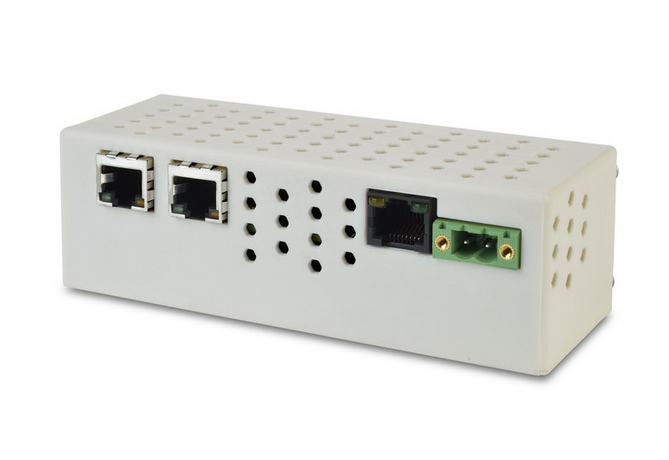
Fledgling startup Itus Netwroks thinks it might have a solution to this problem: the iGuardian. It’s a little box that sits between your router and the ethernet cable from your wall, silently inspecting all the incoming and outgoing data running through the connection. By drawing information from regularly-updated, open-source databases of known threats, the device looks for patterns and symptoms that might indicate malicious activity. If iGuardian detects that something unusual is going on, it can cut off the connection, halt all data entering or leaving your network, and effectively stop a hack in its tracks.
It’s certainly not the first or only device of its kind, but what is remarkable about iGuardian is its price tag. Generally speaking, network security solutions are rather expensive, but at $179 ($99 if you back the Kickstarter project early), iGuardian is arguably one of the first products in its category that won’t break the bank. This is huge, since price is usually the biggest obstacle standing in the way of adoption.
As with most hardware startups these days, Itus Networks has turned to Kickstarter to gather up the necessary funds for a large-scale production run. If the freshly-launched campaign manages to meet its $125K funding goal in the next 30 days, iGuardian might finally bring affordable, easy-to-use network security within reach of the average consumer. Back the project now, and you can lock one down for about $109 to $130, depending on what level you choose. If all goes as planned, the company expects to ship the first units to backers as early as February 2015. Find out more here.
Editors' Recommendations
- The best smart light switch for Alexa, Google Home, and HomeKit
- Ring Pan-Tilt Indoor Cam vs. Ring Stick Up Cam Pro: Which is better for your home?
- Roku (yes, Roku) make a home security camera, and it’s discounted today
- Blink sale: Up to 42% off home security cameras and video doorbells
- Arlo Pro 3-pack of security cameras is down to $400 from $700



